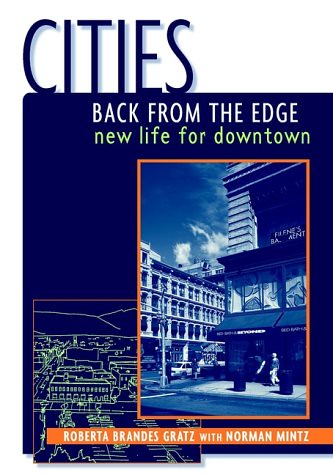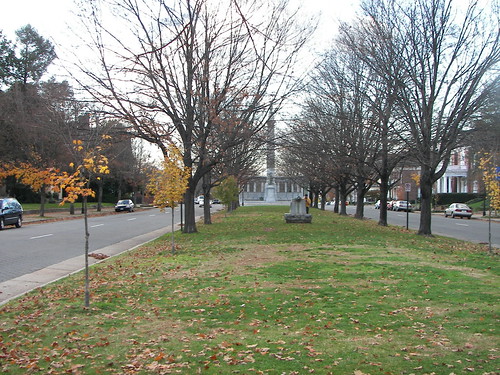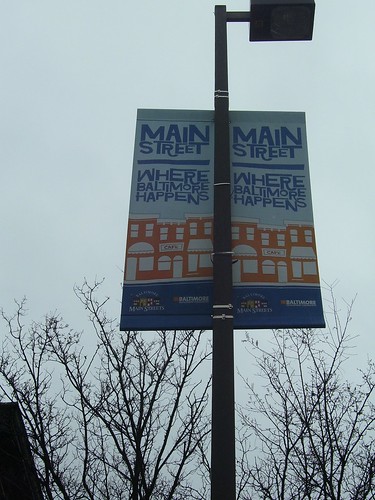May is Historic Preservation Month: 60 ways to celebrate | Part 3: Learn and Get Involved (37-52)
This series is updated and expanded annually, to encourage us to acknowledge and celebrate historic preservation, ideally not only during Preservation Month but throughout the year, by pointing out things that we can see and do.
The first post runs on the first day of May and the other posts on succeeding Fridays.
-- May is Historic Preservation Month: 60 ways to celebrate | Part 1: Cultural Heritage Tourism (1-19)
-- May is Historic Preservation Month: 60 ways to celebrate | Part 2: Explore your community (20-36)
-- May is Historic Preservation Month: 60 ways to celebrate | Part 3: Learn and Get Involved (37-52)
-- May is Historic Preservation Month: 60 ways to celebrate | Part 4: Preservation At Home (53-60)
I reorganized the series this year to put "things to do" up front, and the harder stuff "learning and volunteer" behind.
A preservation organization in Snohomish, Washington marching in a local parade.
Preservation Month aims to encourage increased engagement by supporters, and to reach broader audiences, in communicating the message that preservation is essential to community vibrance, identity, and quality of place.
The National Trust suggests using its "This Place Matters" promotion program as a way to draw attention to historic properties.
-- This Place Matters Toolkit: How to Create a Campaign for a Place You Love, NTHP
Some organizations do a much better job of organizing activities throughout the month than others. Agencies that stick out positively include the State of Indiana Historic Preservation Office and the City of Boston Landmarks Commission.
Bringing media attention to preservation. It's also a great opportunity to try to engage local media on preservation topics.
For example, the statewide preservation group Indiana Landmarks releases their list of most threatened resources just before the onset of Preservation Month, as a way to get publicity and draw attention (see "Indiana Landmarks names '10 Most Endangered' sites for 2014," Indianapolis Star, "A new pastime: Preservation Month brings plenty of events in May in Southern Indiana," Jeffersonville News and Tribune).
(On the other hand, you can argue that releasing a list of endangered properties at another time of year may bring additional publicity to the cause outside of the May period when more attention is likely to be focused.)
50th anniversary of the National Historic Preservation Act in 2016 as an opportunity for assessment. 2016 was the 50th anniversary of the National Historic Preservation Act, which was passed in 1966. The law was spurred by public protest against the impact on existing neighborhoods from urban renewal and highway construction projects, "undertakings" funded for the most part by the federal government.
-- Preservation 50

Learn; Get Involved
37. Learn about the history of your community. For example, for DC, read Dream City: Race, Power, and the Decline of Washington, D.C., 1964 -1994 and Between Justice and Beauty, and more.
In DC, knowing about the original L'Enfant Plan and follow up planning by the McMillan Commission, allows you to understand the antecedents of the city, and make better land use decisions going forward, for your neighborhood and for the city.
 Start with Washington in Maps by Iris Miller and Washington: Through Two Centuries by Joseph Passonneau. And see "Washington: Symbol and City," a permanent exhibit at the National Building Museum.
Start with Washington in Maps by Iris Miller and Washington: Through Two Centuries by Joseph Passonneau. And see "Washington: Symbol and City," a permanent exhibit at the National Building Museum.Many university presses publish books on local history and architecture that are well worth reading.
For example, the Wayne State University Press published a fabulous book on railroad stations, Michigan's Historic Railroad Stations.
The book, by Michael Hodges, doesn't have an extensive section of introductory text, but what's there is golden--a succinct discussion of public space and the importance of railroad stations in the civic realm, and a good survey of the key texts in the field.
Johns Hopkins University Press (catalog on railroads, regional interest, including architecture) and the University of Chicago Press (architecture) have extensive publishing programs on history and architecture, with many many excellent items. So do the MIT Press and Princeton Architecture Press, as do most university presses, from the University of California to the University of Tennessee.
History Press and Arcadia Publishing Company have extensive publishing programs on community history.
38. Become a member of your citywide/countywide/regional preservation organizations such as the DC Preservation League, the Municipal Arts Society in New York City, Baltimore Preservation, Historic Districts Council in New York City, Cleveland Restoration Society, Preservation Resource Center of New Orleans, Landmark Society of Western New York (which serves Rochester, among other places), etc. I am a big fan of the Chicago Bungalow Association.
39. Before you get too involved, you might want to take the time to read your city, county, or state historic preservation plan. This will educate you about preservation issues in your area. (Although generally such plans are pretty positive, and don't go into enough detail about the "threats" nor do they outline ways to address "opportunities" in a process design approach.)
In order to implement the provisions of the National Historic Preservation Act, the National Park Service was tasked with the responsibility of working with states to create a process for designating resources for the "National Register of Historic Places." All states have historic preservation offices to coordinate efforts at the state level. And in order to be "certified" at the state and local level--this means that the agency is eligible to use federal historic preservation funds--the entity has to have a plan.
-- DC Historic Preservation Plan
However to fully protect historic resources, you need local laws and regulations. Note that something that many people find confusing is that the federal law only concerns federal undertakings--federally-owned buildings (the Post Office is exempt) and federal programs spending money locally (like aging programs or road and transit projects).
Getting national recognition from the National Register of Historic Places for a local historic district isn't enough to protect resources from local, state, or private action. Separate local laws are required.
Unfortunately, I'd argue that the 50th anniversary of the law was an opportunity for assessment and evaluation, and setting an agenda for improvement, and in most places that did not happen.
40. Learn about why historic preservation is important, in and of itself, as well as a urban revitalization strategy. The reason I am a strong supporter of preservation is that I have come to believe that it is the only approach to economically sustainable neighborhood and commercial district revitalization that works for the long haul.
Hands down though, the best speech on the power and centrality of beauty and historic preservation in civic life is that by recently retired Mayor Joseph Riley of Charleston, SC.
Probably the best two books to read are Cities: Back from the Edge and Changing Places, in terms of getting up to speed on the issues quickly without having to read dozens of other tomes.
 If you want to get into more detail, I suggest reading some of the work by Donovan Rypkema, such as his speeches, including "Culture, Historic Preservation and Economic Development in the 21st Century" and "Economic Power of Preservation," and his report on the economic value of preservation for New York, New York: Profiting through Preservation.
If you want to get into more detail, I suggest reading some of the work by Donovan Rypkema, such as his speeches, including "Culture, Historic Preservation and Economic Development in the 21st Century" and "Economic Power of Preservation," and his report on the economic value of preservation for New York, New York: Profiting through Preservation.The book published a couple years ago by the World Bank, The Economics of Uniqueness: Investing in Historic City Cores and Cultural Heritage Assets for Sustainable Development, extends these arguments more broadly.
41. Join a neighborhood/local preservation group, such as in DC the Capitol Hill Restoration Society, Historic Takoma, or Historic Mount Pleasant).
42. Nationally, you can join the National Trust for Historic Preservation while you're at it. If you join, you can visit NT owned sites and affiliate organization museums at a discount/free, get discounts at Historic Hotels, and discounts on products you purchase.
 43. Preservation Action is a 501(c)4 advocacy group that advocates for specific legislation and is also a membership group. Their "Preservation Advocacy Week" is held in March, where members lobby Members of Congress for legislation favorable to preservation.
43. Preservation Action is a 501(c)4 advocacy group that advocates for specific legislation and is also a membership group. Their "Preservation Advocacy Week" is held in March, where members lobby Members of Congress for legislation favorable to preservation.44. At the state level, most states have statewide preservation organizations. In the DC-VA-MD area, that means Preservation Maryland and Preservation Virginia/Association for the Preservation of Virginia Antiquities, as well as the DC Preservation League. Many sponsor annual or bi-annual conferences, journals, and other provide other resources.
I am always impressed by the quality of the annual conference of Colorado Preservation. (The Saving Places Conference is in February, so we missed it.)
So join your statewide group.
45. Volunteer/1. Get involved in a preservation issue in your neighborhood or the city-county at large, which could include attending meetings of your local historic district/preservation commission, which in DC is the Historic Preservation Review Board, or working on a particular project affecting your neighborhood or city.
Issues common to many communities are inadequate protections for "old" buildings that may be historic but not necessarily designated (e.g., "Boston-area towns seek ways to slow razing of historic homes," Boston Globe) and teardowns, where older smaller houses are bought solely for the opportunity to build a new and bigger house on the same property ("Demolition Derby: As high-dollar houses crowd onto tiny lots, teardown fever is sickening neighborhoods across Nashville ," Nashville Scene) which is likely well located. This is an increasing problem in high value real estate markets, and less of an issue in weak real estate markets.

Median, Monument Avenue, with a monument in the background.
Another example is in Richmond, Virginia, where the Save our Statues organization is focused on restoring and maintain the city's statues, for example, those along Monument Avenue. See the article from the Richmond Times-Dispatch.
There are always issues with "old" commercial buildings being demolished in favor of new architecturally homogeneous buildings (e.g., preserving diners in Baltimore County, Maryland, or historic theaters in various places).
46. Volunteer/2, in a traditional commercial district revitalization initiative, at a history museum, or for a historic site. A "division of the preservation movement" is the Main Street commercial district revitalization program, which links economic development with historic preservation focused on the revival of local commercial districts and downtowns in smaller communities.
There are affiliates in every state, in many provinces in Canada, and in other countries as well. In the DC region, Maryland and Virginia have state level programs--Baltimore's program at the city level is independent of the state program, and there are a number of Main Street programs in DC.

The Main Street Approach is ground up, where residents and other stakeholders join in with merchants and property owners to work on improving the commercial district overall. Typically, programs have a manager and may have additional full-time or most likely, part-time staff. It's volunteer.
Note that big downtowns and large business improvement districts tend to be members of the International Downtown Association, and are more focused on clean and safe activities and tend to be run by full-time staff, although in some cities such as San Diego, many of the business improvement districts are run using the Main Street Approach.
In my experience, interestingly, volunteers in Main Street programs tend to be 10-15 years younger than those in traditional preservation organizations, and the most active Main Street volunteers tend to live closest to the commercial district.
This makes Main Street commercial district revitalization programming a tremendous opportunity to draw new and younger audiences to the preservation movement.
There are more than 1200 Main Street programs around the county, including active programs in every state.
47. Volunteer/3, at a history museum, a historic park or at a historic site. Museums and historic sites are always looking for volunteers, as our most park systems, including the National Park Service. Many docents at sites and museums are volunteers.
-- Volunteer in Parks program, National Park Service
48. Work to preserve historic schools as schools. The DC Public School system has an archives and museum that is also a meeting center, Sumner School, at 17th and M Streets NW.
Sprawl-supportive building accreditation standards for school buildings push the concept of larger campuses served by school buses.
-- Historic School Preservation help page, NTHP
-- Why Johnny Can't Walk to School: Historic Neighborhood Schools in the Age of Sprawl, NTHP
-- Helping Johnny Walk to School: Policy Recommendations for Removing Barriers to Community-Centered Schools, NTHP
A tougher issue is preserving school buildings that are no longer needed. This is a big problem in large cities that once had much bigger populations and a large set of school buildings spread throughout the city to accommodate.
In stronger market cities the school buildings are in high demand for conversion to housing. In weak market cities, typically there isn't much demand for the buildings and they moulder, although sometimes they can be converted to social housing with the use of various tax credit programs. (See Why Vacant Schools Still Sit Empty, a publication of The Pew Charitable Trusts.)
49. Another way to learn a lot but very quickly is to attend a preservation conference such as the annual meeting of the National Trust for Historic Preservation (this year it's in Denver starting October 10th) and the National Main Street conference, which was held in Seattle in March, some sessions materials are available).
50. Check out the history resources at your local library or a specialized collection such as in DC at the Washingtoniana Collection at the Martin Luther King Central Library or the Peabody collection at the Georgetown Branch, the Kiplinger Library at the Historical Society of Washington, the Jewish Historical Society, or the Moorland-Spingarn Collection at Howard University. Many city libraries have history collections.
51. Read a historic district brochure (or historic building or district nomination form). In DC, they are available online or in hard copy at the Historic Preservation Office. Many communities produce and publish these kinds of publications. Two of the best I've ever read is one on Jefferson County Indiana including Madison (One of the first Main Street communities) and Hanover, and the other on the Kansas City public market, called City Market. Both lay out their respective histories chronologically but thematically.
Relatedly, to win designation, the group organizing the creation of a historic district has to create a "context statement," which outlines the architectural, social, and cultural history of the area. While the writing quality varies, they are usually great resources and fun to read. One example is the nomination form for the Hyattsville Historic District in Prince George's County, Maryland.
The difference between a brochure and the full context statement is the detail. A brochure is succinct and the highlights version, drawn from the full document.
Also note that there is a variant of context statements, called thematic studies. These documents set the stage at a larger scale, that of the landscape, period, or a particular type of building, structure, or site (warehouses, schools, telecommunications facilities).
For example the National Register Publication Historic Residential Suburbs is an excellent discussion of suburban development, recognizing that this type was a part of late stage development within center cities also, at the outskirts but still within a city's boundaries.
The City of San Jose commissioned a Mid-Century Context Statement to document the city's "contributions to California Modernism, [focusing] on resources built between 1935 and 1975 ... [delineating] architectural styles, historic themes and associated property types, and catalogues local practitioners."
52. I am a big fan of reading the design guidelines publications produced for cities or neighborhood historic districts, which describe local historic districts, such as those from Montgomery County Maryland, Richmond, Virginia, Roanoke, Virginia, and the Philadelphia Rowhouse Manual.
The Roanoke Virginia Residential Pattern Book is a stand out!
53. Listen to a preservation focused podcast. Podcasts--"radio shows" are a new addition to preservation-based media. Preservation Maryland produces a great series, PreserveCast, which is worth checking out.
Labels: cultural heritage/tourism, cultural planning, historic preservation, land use planning, transportation history, urban design/placemaking, urban history





0 Comments:
Post a Comment
<< Home